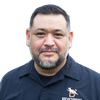A Guide to Potty Training Your Dog
When a puppy is born, Momma takes care of all the pup's needs, including potty time. As a pup gets older, their bladder isn’t developed enough to hold it for long periods until they are 6 months (for smaller breeds, it may be longer). What does that mean for you as a new puppy owner? Lots of supervision and teaching the proper places for your puppy to potty. The following are some potty training tips to help you get the fastest results.
Supervision and Containment
Put a 4’ leash on your puppy at all times so they can be spotted as they try to run away; it will help eliminate the “I couldn’t see where he/she went, and when I finally found him/her, it was too late.” If you’re still having troubles, tie the leash to your belt loop and make the puppy follow you everywhere. Best way to keep an eye on the little one.
Crate train your puppy at night. Dogs don’t like to lay in their own filth. If they have to go out, they will tell you instead of waking up to some wonderfully smelling presents. Not fond of crates? Put the puppy in a small room with nothing they can chew, shred, or swallow. Many hazards are “fun toys” in a puppy’s eyes. Having a space small enough that if they do eliminate, they would have to lay in it will teach them the fastest.
Timing and Routines
Take the puppy out 15 minutes after eating or drinking. Each time you take out the dog, see if they have to go twice (most puppies do). They have the initial sensation of having to go, then the movement of eliminating makes them have to go a second time.
Watch the water intake. It’s okay to keep a water bowl down as long as you can monitor each time they drink and take them out accordingly. If you are not able to monitor them properly, give them water at timed intervals so you can take them out within the 15-minute time frame after they drink.
After each nap, the movement of waking up will make them have to go. As soon as they start waking up, I usually say, “Let’s go potty!” Interrupt long periods of playtime by taking them out. Again, all that rapid movement will make them have to go. It will become such an intense feeling that they will play, play, play, potty, then play again. If the dog is up and moving for more than 2 hours, take them out at the 1.5 to 2-hour window.
Handling Accidents
INTERRUPT POTTYING IN THE HOUSE! Punishing a dog doesn’t mean anything, especially a puppy, except to be scared of a raised voice, newspaper, etc. When the dog starts to eliminate in the home, interrupt them and IMMEDIATELY take them out to the spot you want them to potty.
Advanced Techniques
To teach your puppy to potty on command, start repeating your command for the entire duration of the elimination period. I use “go potty.” So every time my puppy goes potty, I repeat over and over, “go potty, go potty, go potty…” Once the dog is done, I will either treat them or be super excited and say, “Good potty!”
Teach your dog to tell you when they need to go out. If you want them to ring a bell, scratch at the door, or bark, those are all cues they need to go out. Teaching a dog to ring a bell is the easiest way for them to let you know it’s potty time.
Final Thoughts
Now that you have the information you need, putting it to use will be the challenge. We are humans and make mistakes; puppies are learning and will also make mistakes. Just keep going back to the basics, and eventually, they will learn.
